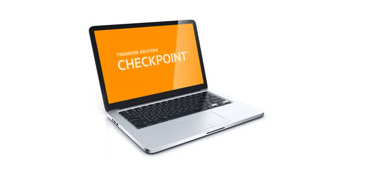Answering frequently asked questions about the lease standard and how companies can make adjustments for common lease-related challenges.
Jump to:
| What is the Incremental Borrowing Rate? |
| Why is the IBR important? |
| What are the challenges of IBR? |
| A methodical approach to developing the Incremental Borrowing Rate |
Under the ASC 842 lease standard, almost all leases are now recorded on the balance sheet.
In several related blogs, we’ve discussed lease identification. Once we identify that a contract is (or contains) a lease, we record a lease liability and the related right-of-use asset. Now, we need to determine what rate to use in order to discount the future lease payments.
Let’s take a look at what the incremental borrowing rate (IBR) is, how it impacts financial statements, and how to overcome common challenges to best estimate the IBR.
What is the Incremental Borrowing Rate?
According to ASC 842, the IBR is defined as follows:
“The rate of interest that a lessee would have to pay to borrow on a collateralized basis over a similar term an amount equal to the lease payments in a similar economic environment.”
If the rate implicit in the lease can be readily determined, ASC 842 dictates that lessees should use that rate when calculating the lease liability. If the rate implicit in the lease cannot be determined, lessees should use the incremental borrowing rate (IBR).
Generally, the rate implicit in the lease is not readily determinable or cannot be determined, the result is that the lessee will fall back on using the IBR. The challenge comes in determining exactly what rate should be used as the IBR. There are consequences of using an inaccurate rate, so our goal is to make sure we have a good method of estimating the IBR.
Why is the IBR important?
The incremental borrowing rate is important because the higher the rate used to discount, the lower the lease liability will be. Conversely, the lower the discount rate is, the higher your lease liability will be.
From an accounting perspective, the decision of which rate to use is important. Some companies may opt to use the risk-free rate (this is a practical expedient available for private companies only). The risk-free rate is generally going to be much lower, resulting in a higher liability so this is something to consider. The other option is to use the IBR.
The decision of whether to use a lower or higher rate can also have an impact on other areas of the financial statements as well as ratios. For instance, using a higher rate will result in a lower right-of-use asset and in turn, a higher asset turnover ratio. Using a lower rate (perhaps the risk-free rate) will result in a higher right-of-use asset and hence a lower asset turnover ratio. The interest coverage ratio will also be affected, i.e., a higher rate will result in a higher interest expense and therefore a lower interest coverage ratio.
What are the challenges of IBR?
To gain some insight as to what the challenges are, let’s focus on some of the key parts of the definition that present challenges: collateralized basis, similar term, lease payments and similar economic environment.
Some of the questions that may come to mind are:
- How do we come up with a rate that reflects a similar lease term and lease payments?
- How do we differentiate between uncollateralized and collateralized?
- What are the economic factors we should consider?
When developing an IBR, companies can begin with a base rate that reflects their cost of borrowing and then make adjustments for both company-specific factors, such as credit risk; lease-specific factors, such as lease term and lease payments and collateral; and overall economic conditions.
What are the most common challenges and how can companies overcome them?
-
Developing a base rate
Developing a base rate has its’ challenges. Although companies may be able to analyze rates for loans that were funded close to the lease commencement date, with similar terms and payments and develop a rate, based on that, it will be unlikely companies will have borrowings in line with lease commencement dates.
In some cases, companies may be able to obtain the cost of borrowing from their lenders but again, this may not always be a viable option, so we need to build some other strategies. Further, many companies generally borrow on an uncollateralized basis, so they have no idea what their collateralized rate is.
So, our focus here will be developing a rate, assuming we have limited comparative information. A good place to begin would be evaluating credit risk. Credit risk takes into account factors such as a company’s credit history, capacity to repay, conditions of the loan, capital and collateral.
-
Considering company-specific factors
Credit rating will be a key consideration used in determining credit risk, so a company should formulate a strategy to determine what its credit rating would be. Credit rating can be used to assess the company’s credit history, capacity to repay, etc.
If this information is available from a credit rating agency, the task isn’t too complicated; however, if it’s not available, a bit more work is involved. In this case, the company may perform a quantitative analysis of its financial figures by calculating ratios (for example, debt to EBITDA) and using those ratios as a benchmark to figure out which credit group it falls into, based on the results and analysis of the descriptions for various ratings issued by the rating agencies and experience (r. (Ratings are assigned by credit agencies and higher grades represent lower levels of default).
Economic conditions should be considered as well. Once the company has developed its credit rating, it can develop a basic rate by analyzing rates for loans, given various rating categories. However, keep in mind this rate does not take into consideration the particulars of the loan.
If the company took out a loan during or very close to the period of entering into the lease, that rate can be used as a starting point and adjustments can be made to get the rate in line with the current conditions and terms (the new lease). The credit rating issued at that time can be used. However, keep in mind that credit ratings are heavily based on financial ratios at a given time so if too much time has passed since the inception of the loan, it won’t be a relevant comparison.
-
Adjusting for lease-specific factors
The next consideration will be lease-specific factors. Each lease has specific terms, and those terms will impact the rate. Once we begin to determine what the company’s rate would be (based on company-specific factors), we need to make adjustments for lease-specific factors.
Let’s begin with collateral. One area that has proved to be challenging is determining what the collateralized rate is. We know we need to factor in the impact of collateral on our uncollateralized rate but how do we adjust the rate for collateral?
When making an adjustment to the base rate for collateral, assume that borrowing on a collateralized basis would result in a lower rate than borrowing on an uncollateralized basis (less risk). How much lower?
Well, the next thing to consider is the collateral being used. A good rule of thumb would be to assume the asset being leased is the collateral. If another form of collateral is being used, compare it to the leased asset, from a liquidity perspective. If the collateral is less liquid than the leased asset (i.e., the quality of collateral is lower), the rate would be higher (since there is an inverse relationship between quality of collateral and interest rate).
If the collateral is more liquid than the leased asset (i.e., the quality of collateral is higher), the rate would be lower. For example, if we determine the borrowing rate to be 10%, based on our analysis of credit rating and a loan without collateral, we may determine that rate to be 8% with high-quality collateral. On the other hand, with collateral of a lower quality, we may determine the rate to be 9.5%.
The term of the lease and the structure of payments will also have an impact on the rate. Generally, if the term is longer, the rate will be higher (since the risk is higher). If more payments are made up-front, the risk (and therefore rate) may be lower. Companies need to factor in the lease term and lease payments when developing their IBR.
As you may have realized by now, the IBR that is developed by a company takes very specific lease-related factors into consideration. Therefore, it is important to note that a different IBR should be developed for each lease. Even if two leases have similar lease terms, the impact of the quality of the collateral, for example, will mean the rates will not be the same (i.e., the lease will the higher quality collateral will have a lower rate).
Another important point to make is that circumstances can change, and companies should be sure to keep their IBRs up to date. For example, a change in the lease term could impact the IBR, either increasing or decreasing it, depending on whether the lease term has been extended or shortened (remember a longer lease term generally equates to a higher rate, due to the higher risk).
A methodical approach to developing the Incremental Borrowing Rate
Although development of the incremental borrowing rate has posed some challenges for companies, following a methodological approach should help ease the burden.
- Consider whether a rate from a recent loan can be used as a comparison from which to develop a base rate. Since this is often not an option, consider developing a rate-based credit rating, taking into account company-specific factors.
- Once you have a base rate, make adjustments for lease-specific factors, such as lease term and collateral.
- Don’t underestimate the importance of making this estimate – the rate used impacts many financial statement accounts and ratios!
 |
WebinarPreparing for the New Leases Standard (ASC 842) Watch our free on-demand webcast for an overview of the ASC 842 lease standard. Emphasis includes areas such as lease definition, lease classification, balance sheet presentation, transition, lease term, lease payment, lessee accounting, implementation considerations and disclosure requirements. |
Related blogs:
 |
Research toolA next generation online research tool that provides valuable insight on business combinations, consolidation, financial instruments, income taxes, leases, and revenue recognition. |









